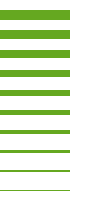https://doi.io-warnemuende.de/10.12754/msr-2016-0102
doi:10.12754/msr-2016-0102
© Author(s) 2016. This work is distributed
under

Dieses Werk ist lizenziert unter einer Creative Commons Namensnennung - Nicht kommerziell - Keine Bearbeitungen 4.0 International Lizenz.
Biological assessment of the Baltic Sea 2015
Abstract. Dating to 1979, the HELCOM time series on species composition, biomass and abundance of phyto- and zooplankton as well as macrozoobenthos from Kiel Bay to the Arkona Basin was continued in 2015. The phytoplankton spring bloom occurred in the Belt Sea at least from 24.2. to 18.3.2015, but extended much longer as additional samples from Mecklenburg Bight revealed. In the Arkona Basin, the peak was met in the period from 7. to 18.3.2015 and in the Bornholm Basin in late April. A succession from diatoms and Mesodinium rubrum to dinoflagellates and dictyochophyceae and finally to prymnesiophyceae appeared in Kiel Bay and the central Bay of Mecklenburg whereas the spring bloom in the Arkona Basin was dominated by Mesodinium rubrum and Skeletonema marinoi. In summer, a diatom bloom failed, but Cyanobacteria developed in the area from the western Baltic to the northern Gotland Basin up to 7 weeks, with phases of different distributions and intensities. In the autumn bloom, the typical Ceratium spp. were missing in the Belt Sea, but diverse diatoms dominated. Invading phytoplankton species after the Major Baltic Inflow were negligible. The chlorophyll a concentrations were highest (9.45 mg m-3) during the spring bloom in the Bay of Mecklenburg in mid-March. The seasonal pattern of vertical export of particulate organic matter in the Arkona Basin in 2015 showed only a minor peak in spring and an elongated period of high flux during summer with a clear succession of algal species within and between the sedimentation maxima. Cyanobacterial summer flux was high and resuspension events of already settled material could be observed in periods of intense winter mixing in January and December. The total annual flux for single elements in 2015 corrected for resuspension amounted to 426 mmol C (5.1 g C), 60 mmol N, 77 mmol Si and 2.1 mmol P m-2 a-1 at a mass flux of 49 g dry mass m-2 a-1. The seasonal zooplankton development started considerably earlier in 2015 compared to previous years, particularly in the Bay of Mecklenburg and the Arkona Basin. Caused by a high density of rotifers and increased stocks of copepods and appendicularians the maximum abundance was already observed in late March. The abundance of cladocerans was, in contrast, exceptionally low; typical mass occurrences of the genus Bosmina were not observed in 2015. In addition to the seasonal timing, an increase in the number of the zooplankton taxa was recorded. This increase was related to the inflow of saline water in spring and autumn, which brought halophilic zooplankton into the investigation area. The species included, among others, were Acartia clausi, Calanus spp., Oithona atlantica (Copepoda), Penilia avirostris (Cladocera) and Parasagitta setosa (Chaetognatha). The 119 species found in the macrozoobenthos mark a moderate diversity. The oxygen supply in bottom waters in the current year was always higher than 2.5 mg/l; no negative effects on macrozoobenthos were detected. Depending on the region, the abundances ranged from 389 to 19.003 ind./m², and the biomass (ash free dry weight) from 2.0 g/m² to 82.6 g/m². The high number of species (22) and salinity (22.7 psu) in the central Arkona Basin indicate a saltwater inflow in the year before. Twenty species of the German Red List were observed at the 8 monitoring stations. With three, the number of invasive species was low in 2015.
